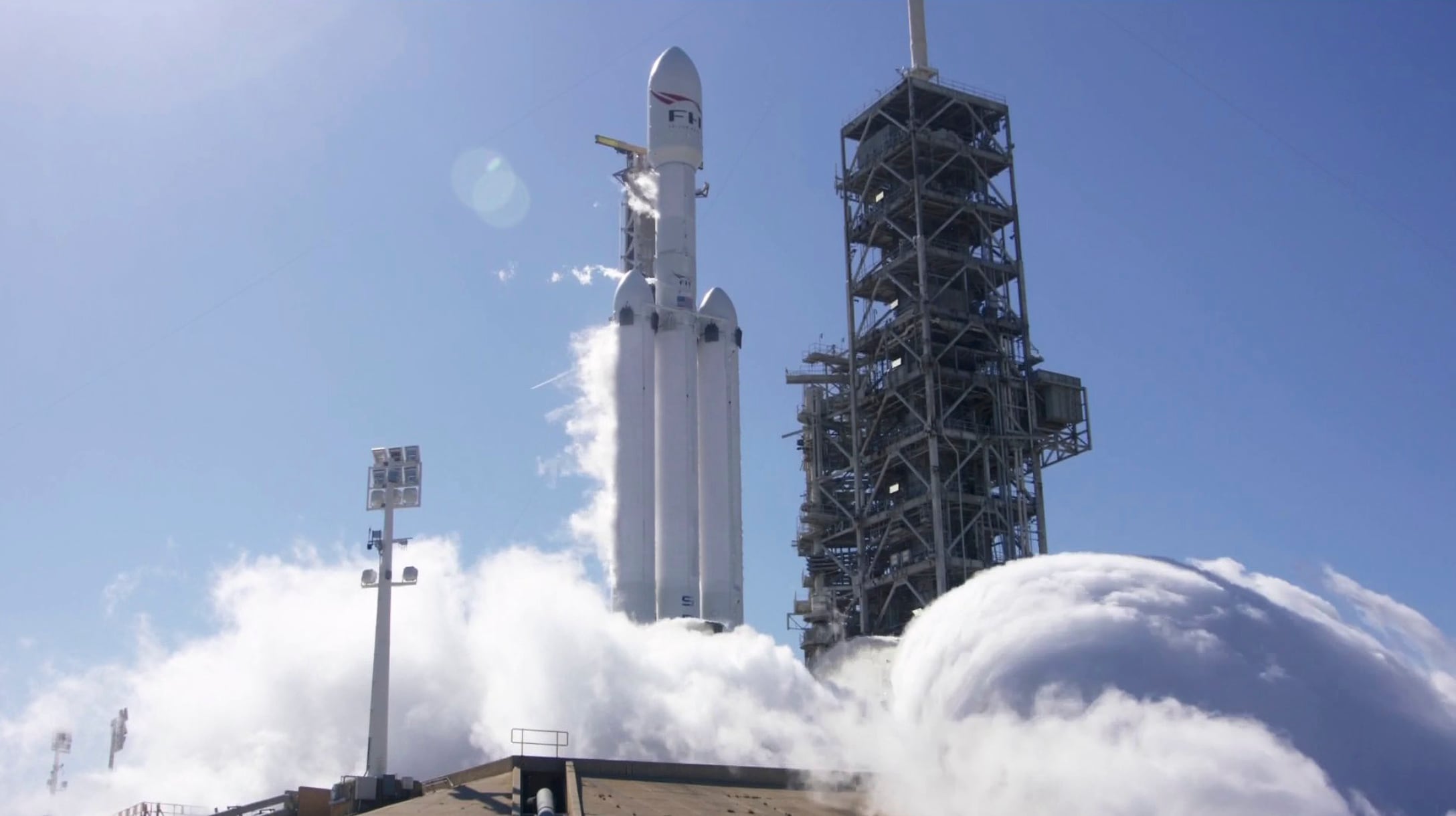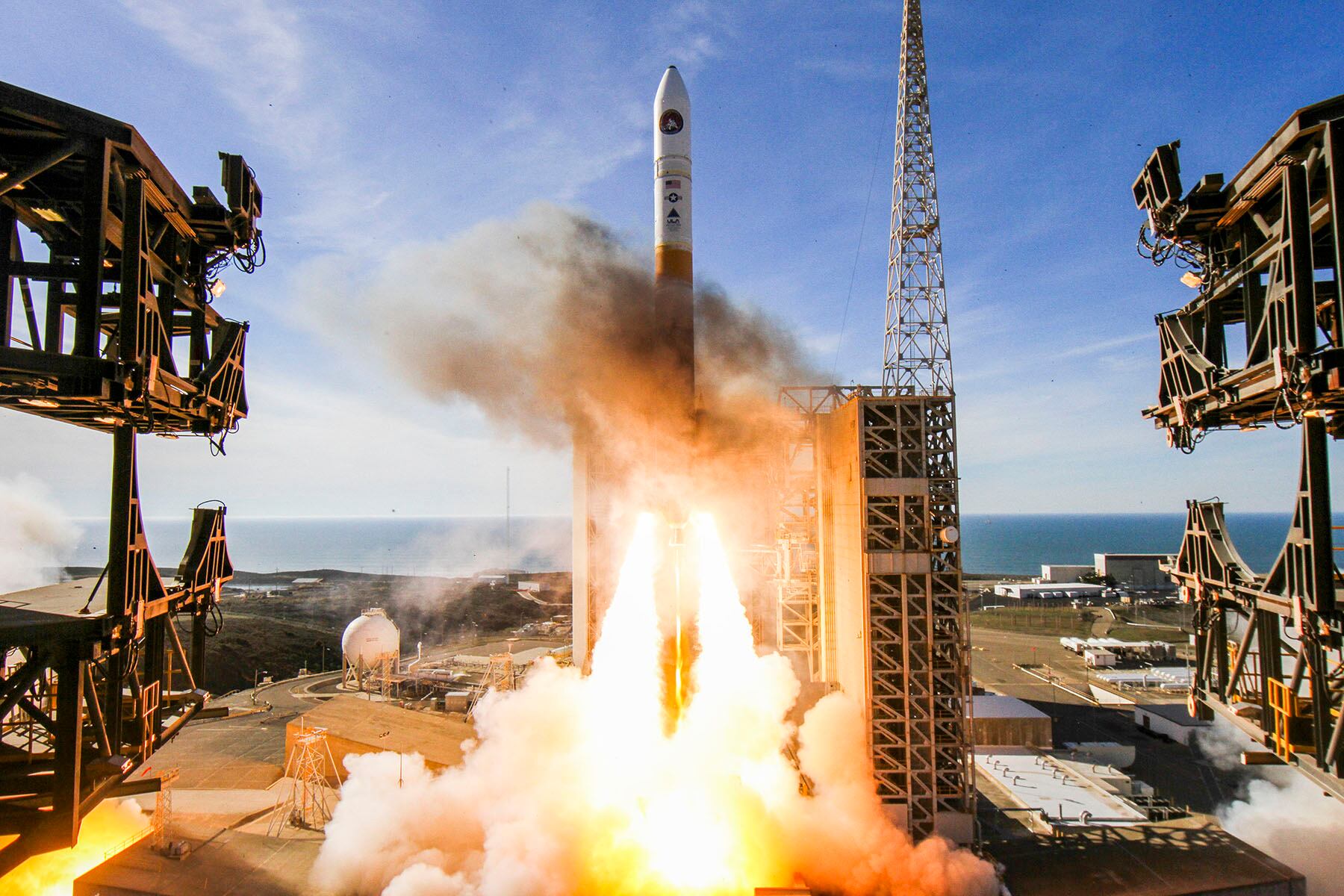The first successful launch by SpaceX of its new Falcon Heavy rocket, the most powerful rocket in operation today, offered a tantalizing glimpse into the future of space — one done with a touch of typical flair from SpaceX’s billionaire owner Elon Musk, who sent his old red Tesla sports car into orbit as the rocket’s first payload. More impressive still, from a technical perspective, is that two of the Falcon Heavy’s boosters simultaneously landed back at Cape Canaveral, ready for refurbishment and reuse.
However, this breakthrough raises a number of questions about how prepared global society is to deal with the growing reliance on space-enabled connectivity, technology and services. These support a diverse array of political, military and economic activities — many of which modern life on Earth relies upon and which the public often takes for granted. Governments, militaries and commercial organizations could take steps now to better understand and mitigate the risks associated with digital society’s increasing reliance on space.
Space is one of the fastest-growing sectors in the global economy, worth $329 billion in 2016 and estimated to double to around $640 billion by 2030. While SpaceX and other companies are looking to create and exploit new markets through the application of novel technologies, such as space manufacturing, mining or tourism, Earthbound societies remain increasingly reliant on a host of more mature space services and technologies for basic functions.
RELATED

These underpin a dizzying array of activities across diverse sectors, including defense maritime and border security, crisis management, and transport. For example, GPS satellites not only allow for safe navigation in the air, on land and at sea, but also underpin financial transactions and the protocols that keep data parcels in sync across the internet and other networks. Without these, Internet speeds could slow, access to the cloud could deteriorate, and control systems for energy grids, water and transportation could begin to fail.
The potential for cascading failures across the myriad systems reliant on space mean that the effects of any disruption could manifest themselves in unexpected places. When a single U.S. communications satellite broke down in 1998, it was not only television and messaging systems that failed. Credit card systems stopped processing payments, weather radars went blind and frustrated drivers found themselves unable to fuel their vehicles as automatic petrol station pumps seized up.

Perhaps most alarmingly, satellites are also an essential part of “national technical means of verification” used by nuclear-armed nations to build trust around arms control agreements through mutual surveillance. Any nation which suddenly found itself blind in space might be pushed to escalate any military standoff through a “first strike” for fear it might not detect any missile launches against its territory.
Similarly worrying are the limits of organizational and societal preparedness to deal with the aftermath of a major disruption of essential space-dependent services. Governments warn that such disruption is becoming increasingly likely in the face of new threats and challenges.
Satellite systems are increasingly threatened by hostile state and nonstate actors, including through dazzling, jamming, kinetic impacts and cyber means. The European Commission has also warned that ground control stations are often vulnerable to terrorists or cyberattacks. However, perhaps the greatest fear is that any attack could provoke a chain reaction of collisions that renders entire orbits useless, known as the Kessler syndrome.
Faced with this growing panoply of risks to space infrastructure, a concerted response is needed to boost the resilience of global society to natural or man-made disruption of space-dependent services. Many of the protective measures apply to both, even if threats posed by solar flares cannot be deterred or negotiated away. In 2012, Multinational Experiment 7 united 17 nations, various civilian agencies and NATO in calls for a holistic framework to managing potential space confrontation: dissuading aggression before, defending satellites during and maximizing the resilience of both space systems to recover after an attack.
RELATED

However, resilience does not stop at the edge of Earth’s atmosphere. Governments are slowly investing in shielding electronics, building “reversionary modes” (or backup systems), and training personnel to operate for prolonged periods without the basic communication, navigation and other space-dependent services that underpin so much of digital living.
Beyond government, some organizations are developing space security and response plans to mitigate the effects of a loss of space services. Militaries, shipping companies and logistics firms are investing in inertial guidance systems as a substitute for GPS. Moreover, Airbus and Facebook are two companies that have suggested using solar-powered drones or high-altitude aerostats to provide internet connectivity and other “pseudo-satellite” services as an alternative to reliance on space.
Ensuring security and resilience is the unglamorous, arduous side of space exploration – no one wants to pay the insurance cover on their home, until they suddenly have a fire and need to make a claim. As the dashboard on Elon Musk’s orbiting Tesla urges “Don’t Panic” – but do prepare.
James Black is a senior analyst in the defense, security and infrastructure group at the think tank Rand Europe. His research includes horizon scanning, futures studies, war gaming and analysis of the implications of new and emerging technologies on the military and society. The commentary is based on analysis that originally appeared on the Observatory for a Connected Society.








